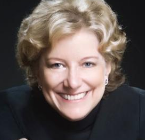#StopWatchingUs
Last updated at 9pm EST
Thousands of people marched on the streets of Washington, D.C., today to protest the National Security Agency's post-9/11 national security apparatus, in a public demonstration they called The Rally Against Mass Surveillance. The crowd, representing an online and offline coalition of more than 100 public advocacy groups from across the political spectrum known as Stop Watching Us, demanded an end to government spying, chanting and waving banners that read "Yes, We Scan" and "Thank you, Edward Snowden." Many showed up wearing costumes and carrying props, including cardboard spy cameras and plaster drones. One protester wore a papier-maiche mascot head of Barack Obama and carried an "Obama-cam"; others wrapped their heads in yellow police barrier tape reading, Caution, Do Not Enter.
Protesters were cheered on in absentia by Snowden, the exiled NSA whistleblower who first disclosed the agency's surveillance programs. In a rare public statement prepared for the rally and read to the crowd, Snowden said "it is time to remind our government officials that they are public servants, not private investigators." The NSA, one of the biggest surveillance agencies in the U.S., was Snowden's workplace before he began leaking some of the agency's top-secret documents to the press in June.
"In the last four months, we've learned a lot about our government," Snowden said. "...Today, no telephone in America makes a call without leaving a record with the NSA. Today, no Internet transaction enters or leaves America without passing through the NSA's hands." Americans are fed up with government and with their lawmakers in Washington, Snowden added. "We are witnessing an American moment in which ordinary people from high school to high office are standing up to oppose a dangerous trend in government. ...We're told (by those in Congress and government) that what is unconstitutional is not illegal, but we will not be fooled. It is time for reform. Elections are coming, and we are watching you."
Another NSA whistleblower, Thomas Drake, showed up in person, talking to reporters about recent revelations that the U.S. government had tapped the phone of German Chancellor Angela Merkel and some 35 other world leaders. Drake told the crowd that any domestic surveillance legislation that may result from the Snowden leaks "must include whistleblower protection" because with them, "government employees will be more likely to turn a blind eye" to abuses of power.
The publicity campaign for today's rally kicked off on Wednesday with the release of a celebrity-studded public service announcement, a video that urged people to join protesters today "to end mass, suspicion-less surveillance" of American citizens. By the end of the rally, the video had wracked up more than 875,000 views on YouTube.
Indeed, more people attended today's rally digitally than in person. Rally organizers said before today that they expected more than 500,000 to participate in the march and in live-streamed "rally watching parties" occurring concurrently in eight other cities. The number of marchers who showed up in Washington, including several busloads from New York City, appeared to number only in the single-digit thousands, a smaller in-person crowd than organizers had hope for and expected.
The march was not without its critics on both sides of the ideological divide, with some saying the coalition of progressive liberals and right-wing Libertarian Party leaders represent, at best, an unsustainable mix of those who would change government and those who would abolish it completely. Rally supporters included members of the American Civil Liberties Union, Chinese activist Ai Weiwei, journalist Glenn Greenwald, as well as leaders of the uber-conservative Libertarian Party, including Gary Johnson, its 2012 candidate for U.S. President.
But Snowden, in his remarks today, insisted that "this isn't about red or blue or party lines and definitely not about terrorism. It's about power, control and trust in government. ...It is about the unconstitutional, unethical and immoral actions of the modern-day surveillance state and how we must all work together to remind the government" to stop "trampling on our right to know, our right to associate freely and to live in a free and open democratic society."
Chief rally organizer Rainey Reitman of the progressive Electronic Freedom Foundation, a pro-privacy group founded in 1990 to protect online privacy and free speech, said "we are not building this coalition for a rally today. We are starting with a rally and we will stop when the NSA stops spying on all of us." Added former New Mexico Governor Gary Johnson, the Libertarian Party nominee for U.S. President last year: "There are members of Congress who wrote the Patriot Act (after 9/11) and are now vowing to fix it, but the only way to fix it is to repeal it. ... We're mad as hell."
-- Marcia Stepanek
(Graphic, top, courtesy rally co-sponsor Ben and Jerry's. Photos: CauseGlobal)
Labels: #stopwatchingus, digital activism, internet privacy, marcia stepanek, privacy, rally against mass surveillance, social media






